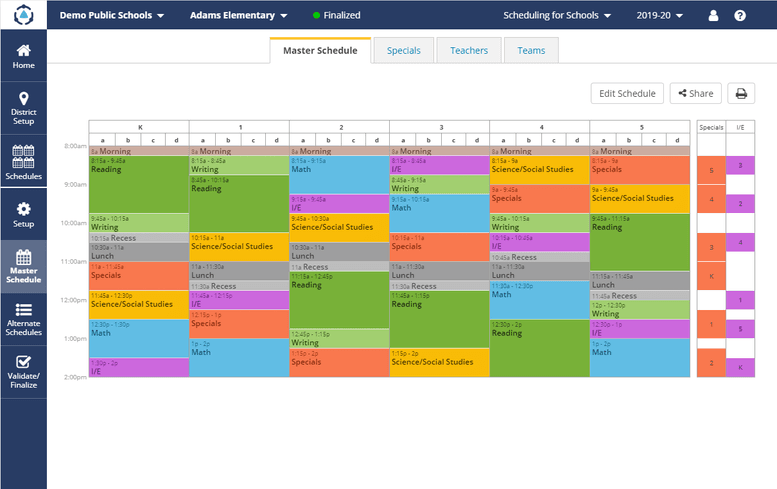This 12-part How to Build an Elementary School Schedule series shares expert step-by-step guidance and proven scheduling strategies to help you create better schedules this year.
A critical step in preparing to build your elementary school schedule is to establish goals and expectations for the schedule this school year. Establishing clear objectives upfront will help you create a master schedule aligned with the strategic goals of your district and school and ensure your schedule is focused on student results. Let’s explore what this means.
- Establish your non-negotiables
Uninterrupted reading and math blocks (no pull-out during these)
30 minutes of daily intervention and enrichment
Daily grade-level collaboration opportunities for teachers
- Define clear guidelines and minutes of instruction
How many minutes of Reading, Writing, Math, Science, Social Studies, and Intervention should students receive each day at each grade level?
What are your current state-level and district-level requirements?*
What are the requirements to achieve quality instruction given the curriculum you're using?
Have you adopted these state-level, district-level, and curriculum-specific requirements fully within your school?
Should ELA or Math minute guidelines be refined to outline specific components (e.g. Phonics, Fluency, etc.)?
- Set specific expectations for pull-out and push-in services
When is it OK to provide push-in or to pull-out student services?
Have you set clear expectations to block pull-out services during core instruction like ELA and Math so that students don’t get less core instruction due to “extra” help?
If you block pull-out in some subjects, when is it OK to provide pull-out services (e.g. Intervention block, Social Studies, Other)?
If you block pull-out, do you allow push-in services for subject-related supports?
Are push-in services limited to specific segments of instruction (e.g., Independent Reading time)?
Your non-negotiables will serve as the guiding principles for all scheduling decisions and trade-off discussions. Examples of non-negotiables include:
A crucial step before you begin building your schedule is defining clear instructional minute guidelines. These include the required subjects and the minimum minutes of subject instruction for each grade. Here are some guiding questions:
* Make sure to review state and district guidelines annually to gain a clear understanding of requirements and incorporate changes. We often find discrepancies between long-standing practice and current requirements.
Discussing and documenting the above helps to bring clarity to the scheduling process. These steps also help align your school staff and master schedules to strategic goals focused on student results.

About DMSchedules
Create Better School and Staff Schedules Now with DMGroup’s DMSchedules Scheduling Software
Learn moreElementary Scheduling Software

